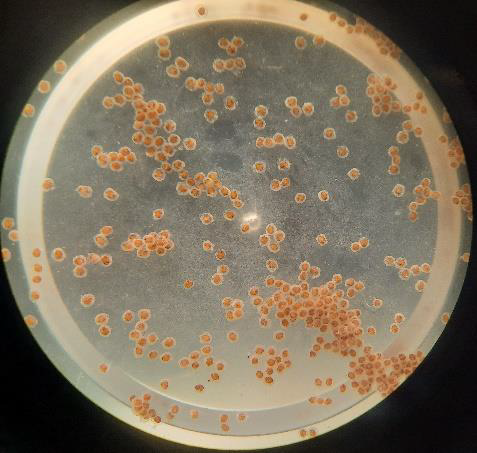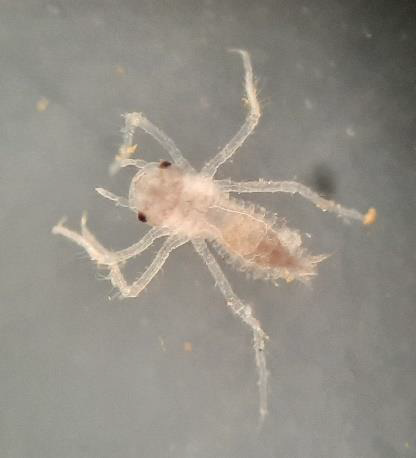
several hundred Hine’s Emerald Dragonfly eggs viewed through a dissection scope,
A few weeks before the New Year, a batch of Hine’s Emerald Dragonfly eggs arrived on station at Genoa NFH. This new cohort, approximately 1000 eggs collected from 6 females, are part of a collaborative captive rearing effort that Genoa has participated in since 2015, along with partners from the University of South Dakota, Illinois DNR, Forest Preserve District of DuPage County, IL, and the USFWS Chicago Field Office.
This season’s eggs are currently being kept in clean well water at a stable 4C, a temperature that delays hatching until conditions are more favorable in the spring. In late March- early April we’ll start warming the eggs and check daily for hatching juveniles. Until then, eggs are checked at least weekly, being monitored for early hatchlings and problems such as fungal growth.
So far there have only been a few early hatches. These new larvae are acclimated to pond water and slowly warmed to room temperature, 15-16C. The warmed pond water contains a variety of zooplankton that the dragonfly larvae- tiny but fierce predators- will utilize as food. The larvae will remain in individual culture cups for several months, protected from pests and growing larger size. When outside pond water has warmed to similar culture temperatures -May to June- the larvae will be placed in small mesh enclosures in rearing tanks in GNFH’s ‘dragonfly trailer’, and later into larger mesh cages in ponds at the hatchery for the 2021 growing season.
We also hope to culture Devil’s Crayfish on station this year. 2020 saw the addition of this species to the hatchery, as a culture trial to check the feasibility of culturing crayfish at GNFH. The animals on station did well, growing and successfully molting, so we hope this effort will continue in the coming years. Devils Crayfish are being studied and cultured in tandem with Hine’s Emerald Dragonflies as it has been observed that the crayfish make burrows and chimneys in wetland sediments that the Hine’s Emerald larvae utilize as habitat.
By: Beth Glidewell

a newly hatched larvae,
